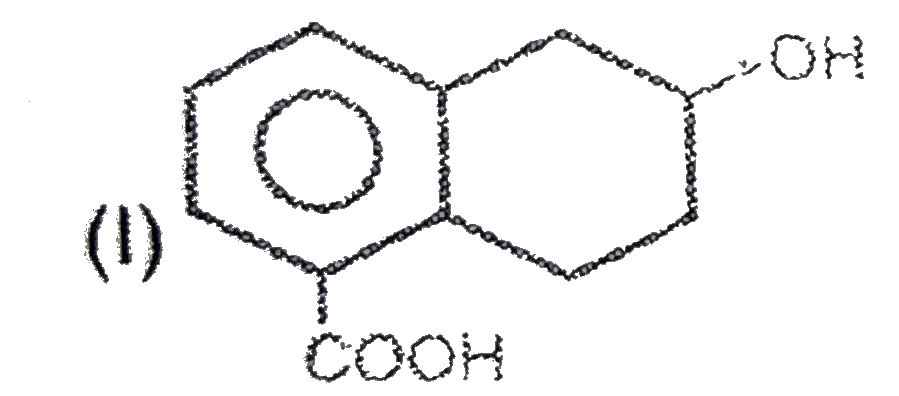The following two compounds are

Geometrical isomers
Positional isomers
Functional group isomers
Optical isomers
The correct Answer is:B
H3C−C=C−CH3 (But-2-ene)
H3C−CH2−CH=CH2 (But-1-ene)
Both are differ in position of double bond hence they are positional isomers
Topper's Solved these Questions
- GENERAL ORGANIC CHEMISTRY BOOK - ERRORLESSCHAPTER - GENERAL ORGANIC CHEMISTRY EXERCISE - PAST YEARS QUESTIONS
85 Videos
- GENERAL ORGANIC CHEMISTRY BOOK - ERRORLESSCHAPTER - GENERAL ORGANIC CHEMISTRY EXERCISE - ASSERTION AND REASON
14 Videos
- GENERAL ORGANIC CHEMISTRY BOOK - ERRORLESSCHAPTER - GENERAL ORGANIC CHEMISTRY EXERCISE - NCERT BASED QUESTIONS (Organic Reactions and their Mechanism )
46 Videos
- ENVIRONMENTAL CHEMISTRYBOOK - ERRORLESSCHAPTER - ENVIRONMENTAL CHEMISTRYEXERCISE - ASSERTION & REASON
7 Videos
- HYDROCARBONSBOOK - ERRORLESSCHAPTER - HYDROCARBONSEXERCISE - ASSERTION & REASON
18 Videos
Similar Questions
Knowledge Check
The following two compound are:
 AIdentical isomersBconformational isomersCgeometrical isomersDOptical isomers
AIdentical isomersBconformational isomersCgeometrical isomersDOptical isomersCompare the stabilities of the following two compounds :
A : cis-1-Ethy-3-methycyclohexane
B : trans-1-Ethyl-3-methycyclohexaneAA is more stableBA and B are of equal stabilityCB is more stableDNo comparison can be madeThe following two compounds I and II can be distinguished by using reagent

(a) aq. NaHCO3 (b) Neutral FeCl3
(c) Blue litmus solution (d) Na metal
(e) HCl/ZnCl2 anhydrousAa or cBb or eCd or eDc or d
The following two compounds I and II can be distinguished by using reagent

(a) aq. NaHCO3 (b) Neutral FeCl3
(c) Blue litmus solution (d) Na metal
(e) HCl/ZnCl2 anhydrous
View SolutionThe following two compounds I and II can be distinguished by using reagent

(a) aq. NaHCO3 " " (b) Neutral FeCl3
(c ) Fehling solution " " (d) Na metal
View SolutionThe following two compounds I and II can be distinguished by using reagent

(1)Aq.NaHCO3 , (2)Neutral FeCl3(aq.)(FeCl3+NH4OH+H2O)
(3)Blue litmus solution , (4)Na metal
(5)HCl+ZnCl2(anhydrous)
View SolutionHow are the following two compounds related?

View SolutionHow are the following two compounds related?

View Solution

 " "
" " 